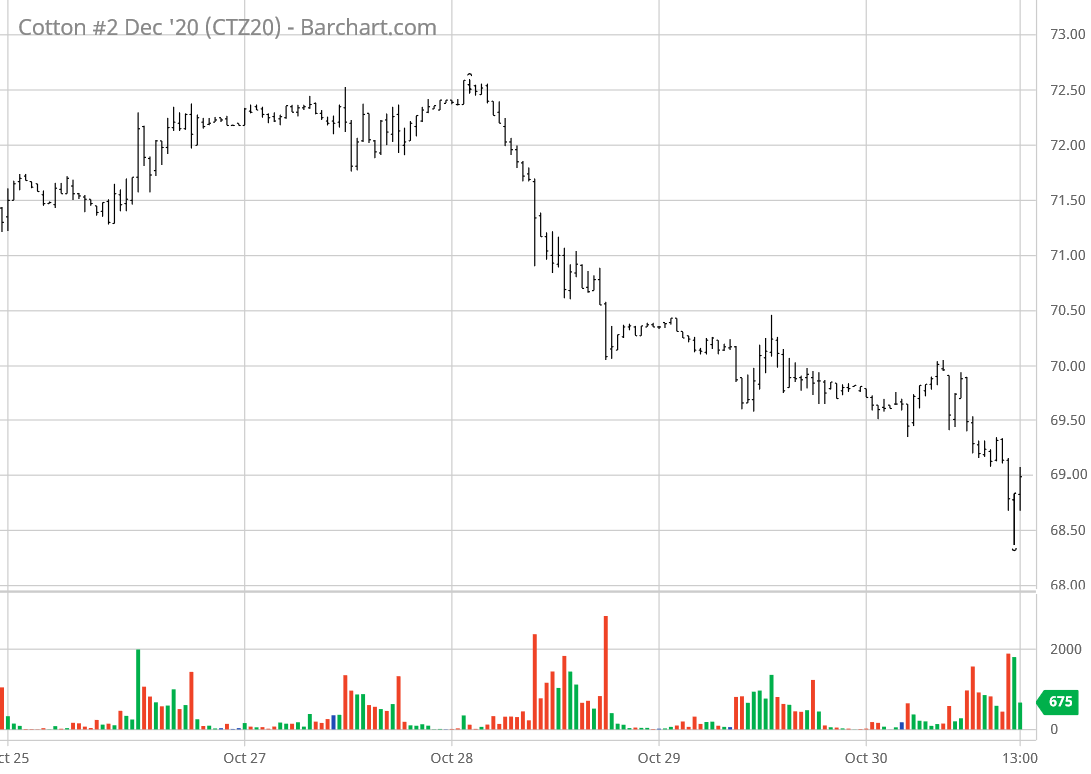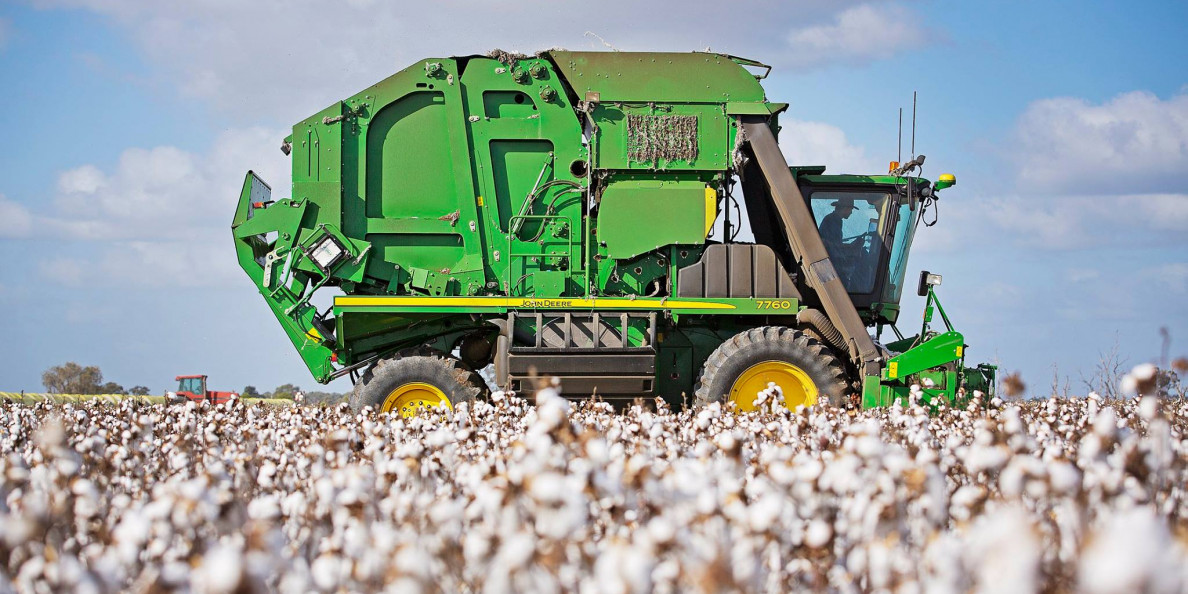The week ending Friday, October 30 saw ICE Dec’20 cotton futures prices trend flat/slightly higher for two days before , which peaking Wednesday and sliding for the rest of the week (see graph above courtesy of Barchart.com). Friday’s settlement was 68.92 cents per pound, down from the previous two Friday settlements. Open interest leveled off this week, which with the lower prices and strong volume suggesting long liquidation.
The October 27 snapshot of Commitment of Traders data showed a slowdown in the recent speculative buying. The net long hedge fund net long position increased by a little over 3,000 contracts week over week, less about 300 new shorts. This is smaller than the previous weeks of increase, and it may well have declined after Tuesday. The U.S. dollar stair-stepped higher, in concert with weaker stock markets and diminished expectations of federal economic stimulus.

Fundamental factors this week included a pause in weakening crop condition ratings along with yet another hurricane to impact Louisiana. The latest (through October 22) export sales report saw another weak of decent net sales, especially considering the the recently strengthening prices. Commercial U.S. cotton demand remains reportedly slow (see here, pp. 2-4 for an oft-repeated official statement “The COVID-19 Pandemic continues to negatively affect cotton demand and disrupt supply chains.”). Certified stocks continued to increase.
Chinese cotton prices and world prices were both mixed this week.
In my opinion, the cotton market can’t avoid the long term bearish implications of USDA’s 2020/21 balance sheet. The longer term damage to cotton consumption by the COVOD-19 pandemic will surely take many months to resolve. In the near term, ICE cotton futures have found new strength on remaining production uncertainty and speculative buying, as well as Chinese state buying. There is also index fund buying, presumably influenced by unprecedented money flows created by the Federal Reserve. There is also the possibility of commercial buying from Chinese mills in response to 1) newly available import quota, 2) restrictions on Chinese sourcing of Australian cotton, and 3) potential impacts from sanctioning cotton exports from Xinjiang. But all that remains to be seen.
I think that the normalization of cotton’s global supply chain and consumers’ willingness to buy more apparel may take a while. Hence a return to profitable market price levels may not happen during 2020. (I do see the possibility of higher prices for the ’21 crop, but partly for bad reasons like La Niña drought.)
From a marketing standpoint, both old crop and new crop cotton prices remain at the low level of the federal program price support. In government-speak, the adjusted world price (AWP) remains below the 52-cent loan rate. This makes for positive loan deficiency payment (LDP) rates for those who sell their cotton in the cash market (being careful to maintain beneficial interest).


